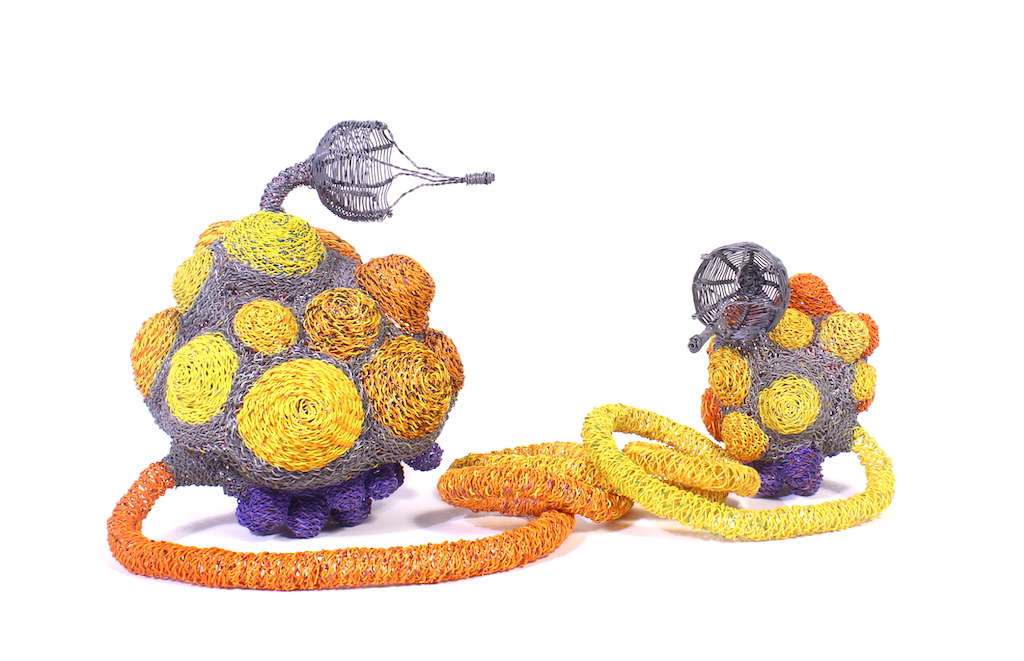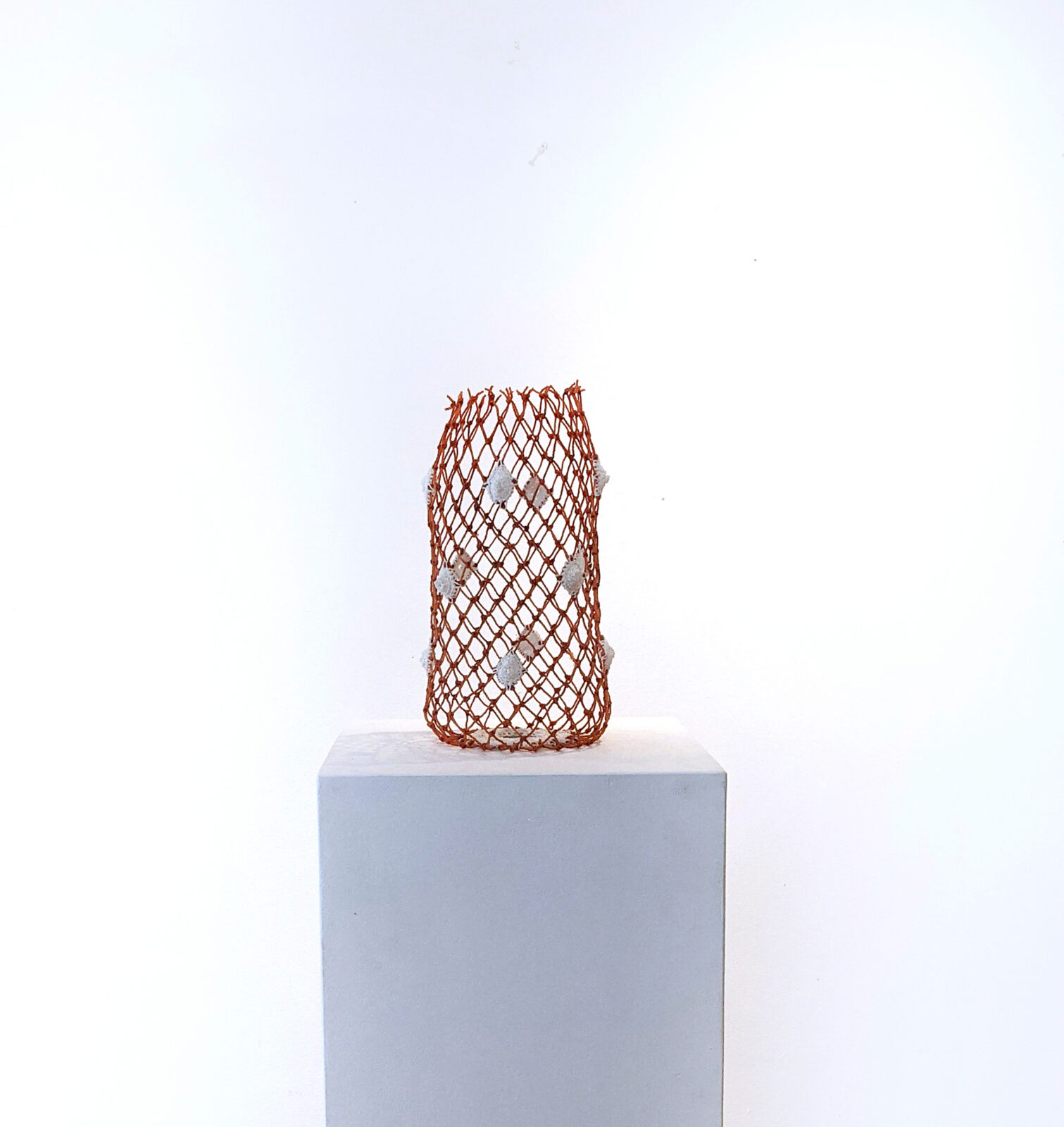Exhibition Statement
Morph focuses on the wonders of nature and the idea of electronic technologies gone awry. Remodeling components and imagery of discarded electronics, the wonderous yet worrisome sculptures propose hybrids of technological structures and living beings. Their organic forms make it possible to reimagine synthetic materials as having the potential to grow and evolve like natural organisms.
Using craft-based techniques such as weaving, Twyla Exner invests labour into objects deemed as refuse as an act of care and recognition for the materials of which they are made. In contrast to the mass production histories, the hands-on, time-honoured processes used to manipulate these materials provide an attentive human touch. Through these manipulations, Exner seeks to investigate how the previous lives of everyday objects can be reflected in objects of art.
Bit by Bit focuses on the life cycles of materials and how they can be recovered, repaired, reused, or recycled. Hundreds of bait bags and thousands of lobster claw bands have been collected from the shores of Mi'kma'ki and have been repaired and repurposed through weaving, crochet, darning, looping, twining, knotting, and other textile applications.
A single lobster claw band may take up to 100 years to fully degrade, which involves breaking down, bit by bit, into micro-rubbers that enter our ecosystems.
By using familiar textile objects from Maritime households, such as quilts, towels, and fishing nets, this work is meant to celebrate craft while serving as a resonant point for discussions with our water protectors, fishering industry, artists, designers, and viewers to discuss solutions to marine pollution.
Bicoastal artists explore the life cycles of materials, in combination with time honoured craft processes. Together, a celebration of craft and resonant point for discussions about sustainability.


